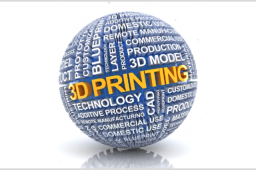

Dubai is leading the way in using 3D printing for desert-friendly architecture. The desert climate demands buildings that are strong, sustainable, and energy efficient. High temperatures, dry air, and intense sunlight put pressure on energy systems, especially air conditioning.
By combining modern technology with smart design, 3D printing is creating structures that save energy while reducing costs. Desert-friendly architecture in Dubai is now showing how innovative methods can support a sustainable future.
Precision in Design for Energy Efficiency
One of the main reasons 3D printing is energy efficient is precision. Every wall and surface can be designed to meet exact requirements. This reduces gaps, weak points, and unnecessary layers. A precise design keeps buildings cooler and better insulated. In Dubai’s desert, strong insulation means less dependence on air conditioning. Precision also lowers the energy used during construction because machines only print what is needed.
Natural Cooling Through Innovative Forms
Desert-friendly architecture relies heavily on natural cooling. 3D printing Dubai allows architects to create complex shapes that promote airflow and shading. Curved walls, hollow structures, and shading features can be printed at low cost. These designs reduce heat absorption and improve ventilation. In Dubai, where cooling systems use a lot of electricity, natural airflow can lower energy consumption significantly.
Use of Local Materials with Thermal Benefits
Local materials play an important role in energy efficiency. Research is ongoing to combine desert sand with binding agents for 3D printing. These materials can be optimized to reflect heat and reduce thermal absorption. AI-driven analysis helps choose the best mixes for insulation. By using desert resources, Dubai reduces transport costs and energy use linked to imported materials. Strong and thermally efficient local materials improve building performance in hot climates.
Reduced Construction Energy Demand
Traditional construction methods often require heavy machinery, multiple stages, and high energy consumption. 3D printing reduces this demand. Printers can build entire walls in a single process without extra cutting or shaping. Less equipment means less fuel and electricity used on-site. For Dubai’s large-scale projects, this reduction in construction energy demand is a major benefit.
Integration of Smart Energy Systems
3D printing in Dubai is not limited to walls and roofs. It also integrates features for smart energy management. Spaces for solar panels, cooling ducts, and water recycling systems can be printed directly into the structure. This saves time and energy during installation. It also ensures that buildings are designed with renewable energy and efficiency in mind from the beginning.
Shading and Sunlight Control
Energy efficiency in the desert depends on controlling sunlight. 3D printing allows the creation of facades and exterior designs that act as natural shades. Overhangs, patterned walls, and layered surfaces block direct sunlight without blocking airflow. This reduces the amount of heat entering the building. In Dubai, where sunlight is strong year-round, shading features cut energy demand for cooling systems.
Stronger Insulation Properties
Insulation is one of the biggest contributors to energy savings in desert-friendly architecture. 3D printing allows for multi-layered walls with built-in insulation. These walls trap less heat and maintain cooler indoor temperatures. Lower reliance on mechanical cooling means lower electricity bills. For Dubai’s desert climate, this insulation advantage is a key factor in making buildings energy efficient.
Faster Construction Means Lower Energy Waste
Another indirect benefit of 3D printing is faster project delivery. Shorter timelines mean less energy is consumed during construction. Lights, machines, and equipment run for fewer hours. This lowers overall energy waste compared to long-term projects built using traditional methods. In Dubai, where large developments happen quickly, this saving is especially important.
Customization for Desert Climate
Energy efficiency depends on how well a building adapts to its environment. With 3D printing, AI and software tools can customize every project for Dubai’s desert climate. From wall thickness to window placement, every feature is optimized. This customization creates a balance between comfort and reduced energy use. Developers save money, and residents enjoy lower utility bills.
Supporting Green Urban Development
Dubai is aiming to build green and sustainable cities. 3D printing desert-friendly architecture supports this by reducing long-term energy consumption. Buildings that rely less on artificial cooling align with the city’s energy goals. Large-scale adoption of such structures helps Dubai reduce its carbon footprint. This makes urban growth eco-friendlier and more cost-efficient.
Long-Term Energy Savings
Energy efficiency in desert-friendly architecture is not only about short-term savings. The long-term benefits are even more valuable.
3D printed buildings last longer with lower maintenance needs. Their insulation and shading systems keep working for years. Residents and developers enjoy reduced energy bills and higher property value. Over time, the cumulative savings become substantial.
Government Vision and Support
Dubai’s leadership is actively supporting the use of 3D printing in construction. Policies encourage the development of sustainable, energy-efficient architecture. By aligning government goals with 3D printing, Dubai reduces both financial and energy costs. This vision is essential in making desert-friendly architecture practical and efficient.
Conclusion
3D printing Dubai desert-friendly architecture is proving to be highly energy efficient. Precision in design, natural cooling, and advanced insulation reduce reliance on air conditioning. Local materials, shading features, and smart energy systems enhance performance further.
Faster construction lowers energy use during building phases. Over time, these methods save money while reducing environmental impact. As Dubai continues to grow, 3D printing will play a central role in shaping sustainable and energy-efficient architecture suited for desert life.
| No comments yet. Be the first. |